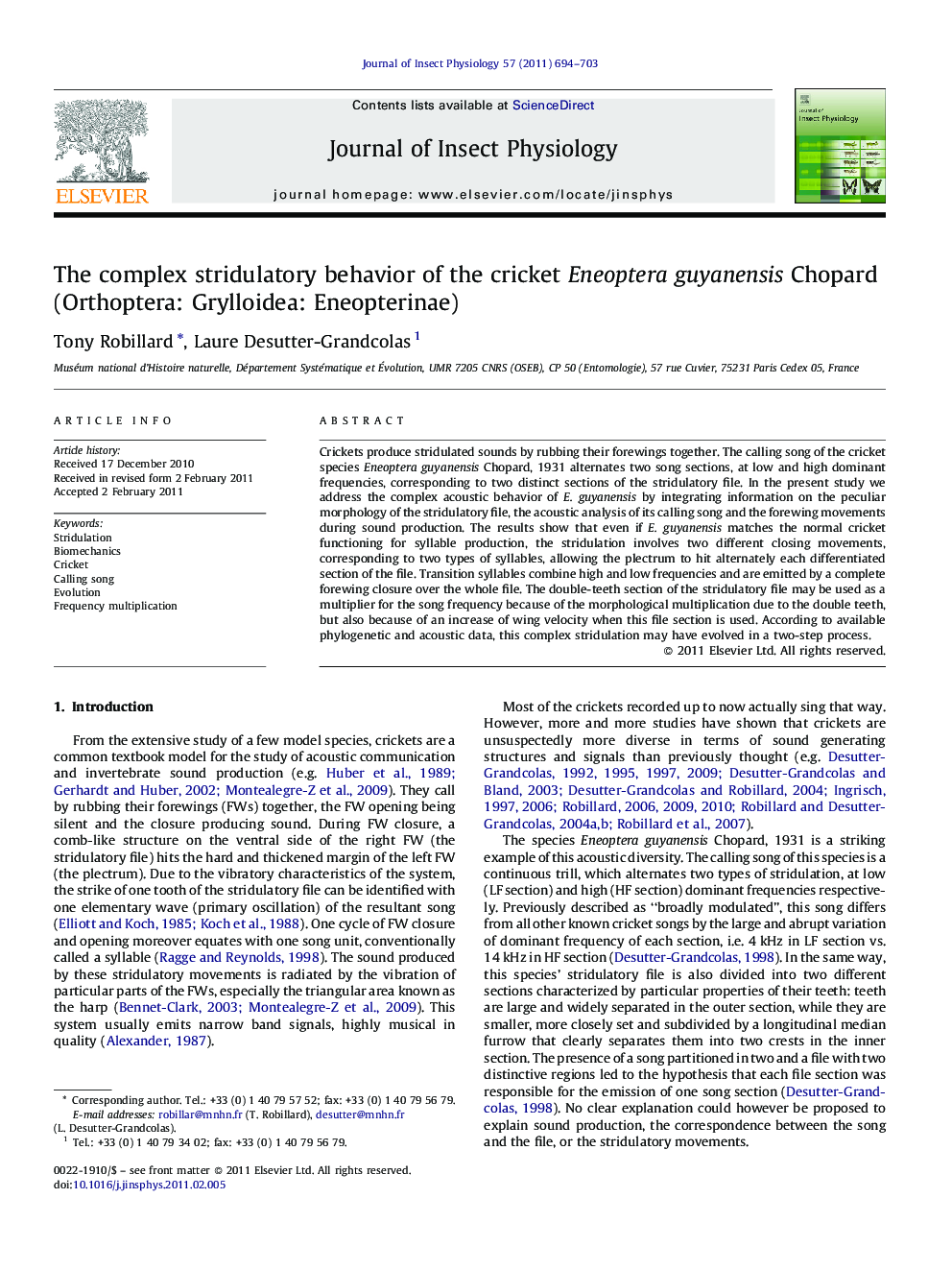| Article ID | Journal | Published Year | Pages | File Type |
|---|---|---|---|---|
| 5922206 | Journal of Insect Physiology | 2011 | 10 Pages |
Crickets produce stridulated sounds by rubbing their forewings together. The calling song of the cricket species Eneoptera guyanensis Chopard, 1931 alternates two song sections, at low and high dominant frequencies, corresponding to two distinct sections of the stridulatory file. In the present study we address the complex acoustic behavior of E. guyanensis by integrating information on the peculiar morphology of the stridulatory file, the acoustic analysis of its calling song and the forewing movements during sound production. The results show that even if E. guyanensis matches the normal cricket functioning for syllable production, the stridulation involves two different closing movements, corresponding to two types of syllables, allowing the plectrum to hit alternately each differentiated section of the file. Transition syllables combine high and low frequencies and are emitted by a complete forewing closure over the whole file. The double-teeth section of the stridulatory file may be used as a multiplier for the song frequency because of the morphological multiplication due to the double teeth, but also because of an increase of wing velocity when this file section is used. According to available phylogenetic and acoustic data, this complex stridulation may have evolved in a two-step process.
Graphical abstractDownload full-size imageResearch highlights⺠E. guyanensis complex stridulation matches the normal cricket functioning. ⺠Two types of syllables are produced, using alternately differentiated file sections. ⺠Transition syllables combine high and low frequencies. ⺠The double-teeth file section may be used as a multiplier for the song frequency. ⺠This complex stridulation may have evolved in a two-step process.
